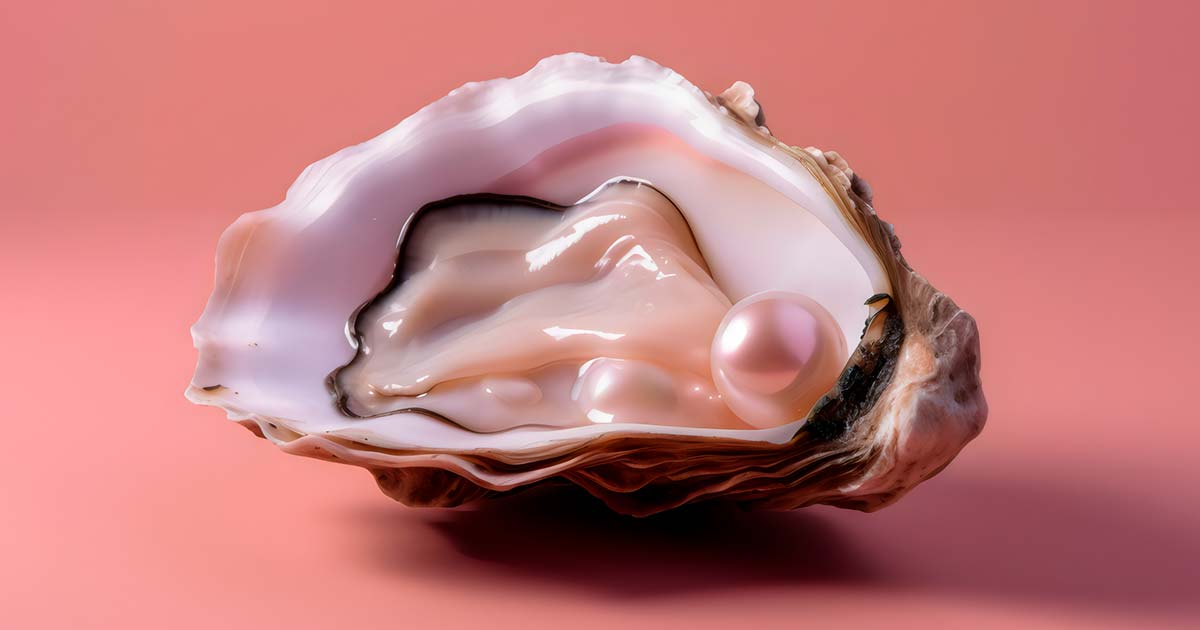10 of the Weirdest Things Consumed as Aphrodisiacs
These days if someone needs a little help getting in the mood, they are likely to use wine, chocolate, oysters, or maybe even certain pharmaceuticals. But what about our ancestors? Well, across cultures and centuries, people have sought some pretty unconventional means to ignite their romantic flames, resulting in a list of aphrodisiacs that defy common sense and occasionally even morality. From the controversial tiger penis to the exotic allure of bird nest soup, it can be amazing the extremes people will go to. These are ten of the strangest things that have, at one point or another, been consumed in the name of love and desire.
1.Tiger Penis: A Controversial Elixir of Virility
Today, few unconventional aphrodisiacs are as controversial or have garnered as much outrage as the consumption of tiger penis. It’s pretty easy to see why. Tigers have been critically endangered for years but that hasn’t stopped people from consuming these magnificent creatures just to give themselves an extra edge in the bedroom.
The belief that the tiger penis has aphrodisiac properties goes back to traditional Chinese medicine, which claims that the member has the ability to boost sexual stamina. There is, of course, no scientific evidence for these claims.
Instead, there is lots of evidence that the practice of using tiger parts in traditional medicine is responsible for driving the illegal poaching of these majestic animals, pushing them ever closer to the brink of extinction. Nothing says romance like the extinction of one of the planet’s most beautiful creatures.
Thankfully, international efforts are in place to combat the illegal trade in tiger parts. Countless organizations and governments have spent decades tirelessly working to protect these endangered species.
- Medieval Aphrodisiacs: Body Scented Bread Dough!
- The Aphrodisiacs that Spiced Up Sex Lives in the Ancient World
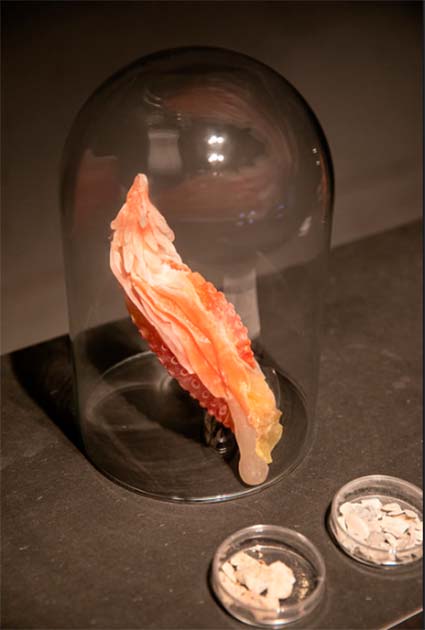
A representation of a tiger penis from the Tiger Penis Project / Kuang-Yi Ku, which proposes the use of emerging biotechnologies to create artificial animal parts for Chinese medicine (Ars Electronica/CC BY-NC-ND 2.0)
Sadly, this might not be enough. Despite the fact that the consumption of tiger penis carries significant ethical and legal concerns, it also has a long history as an aphrodisiac in some cultures. It might be highly controversial, illegal, and detrimental to the conservation of these iconic creatures but every year tigers are killed just so that people can have a good night.
2.Hippopotamus Sweat: An Ancient and Unusual Aphrodisiac
How about something slightly less controversial, but much weirder? Hippopotamus sweat may not sound terribly sexy but its origins as an aphrodisiac can be traced back to ancient Egyptian beliefs.
In ancient Egypt, hippos were worshiped as powerful and virile creatures. The animals had a formidable presence in the Nile River, and they defended their territory fiercely, aspects that the Egyptians respected. This admiration for hippos led to the belief that consuming or anointing oneself with hippo sweat could transfer some of these attributes to humans, enhancing their own virility and sexual prowess.
There was also some confusion as to what constituted “hippo sweat.” Hippos secrete a red mucus-like liquid called Hipposudoric acid, which is often mistaken for red sweat. The Egyptians associated this red secretion with the blood of the god Set.
To the Egyptians Set was not just the deity of chaos and conflict, but also of sexual potency. This association between the red substance and the god of virility further solidified the belief in the aphrodisiac properties of hippopotamus sweat.
Much like tiger penis, while some people continue to swear by hippo sweat as an aphrodisiac, there is no scientific basis for the efficacy. Additionally, while nowhere near as bad as killing animals for their genitals, the ethical concerns regarding the treatment of hippos and the endangerment of their species have led to increased awareness and regulation of such practices in recent times.
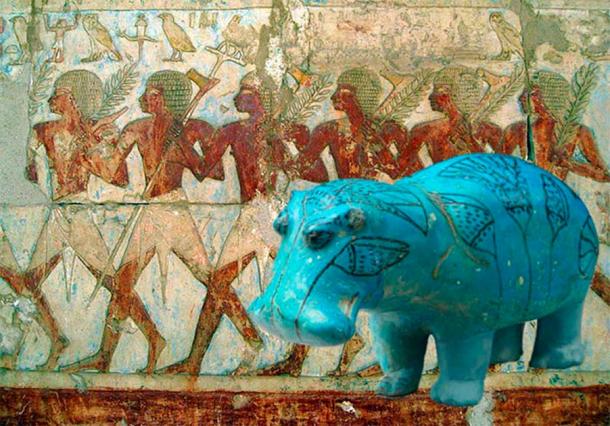
Standing hippopotamus figurine. From Egypt, Middle Egypt, Meir, Tomb B3 of the monarch Senbi II, 1910. (CC0) Background: Members of Hatshepsut's trading expedition to the mysterious 'Land of Punt' from this pharaoh's elegant mortuary temple at Deir El-Bahri. (Σταύρος/ CC BY 2.0)
3.Spanish Fly: A Poisonous Elixir of Passion
Well, at this point you may be thinking if hippo sweat isn’t sexy, what is? The answer, surprisingly, is the Spanish Fly, also known as "cantharidin.” These bugs have a notorious reputation as an aphrodisiac but are actually more closely associated with toxicity than passion.
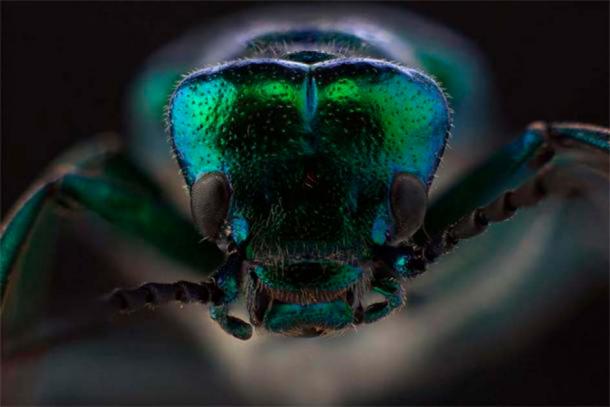
The active component within Spanish fly, a.k.a. cantharidin, can actually be deadly and can be sourced from the hundreds of species of blister beetle worldwide. (Vitalii Hulai / Adobe Stock)
To start with, the name is pretty misleading. “Spanish Fly” actually refers to a substance derived from the blister beetle and has been used in various cultures throughout history, not just in Spain. And it’s been used for a long time. The insect’s use as an aphrodisiac dates back to at least the time of Pliny the Elder (who died in the first century AD) in Rome, who wrote of its performance-enhancing powers.
Perhaps most interestingly, this aphrodisiac actually has some science backing it up. When cantharidin is ingested, it causes irritation and inflammation of the urogenital tract. Which leads to an increased blood flow to the area. As most mature readers will know, this blood flow can lead to heightened sensitivity and arousal.
Unfortunately, nothing in life is free, and consuming cantharidin comes with some not-so-enjoyable side effects; namely, painful urination and even organ damage. In fact, the bug is so toxic ingesting it can have severe health consequences, including death in extreme cases.
Dying from organ failure can make it hard to enjoy a night of passion, meaning most medical professionals deem it not only ineffective as an aphrodisiac but also dangerous. The practice has been banned or heavily regulated in many countries. Of course, this doesn’t mean people don’t still do it.
4.Bird Nest Soup: A Delicacy with a Romantic Twist
Thankfully, our next entry is a little safer and a bit more palatable, bird’s nest soup. It may not seem as bizarre as some of the other entries on this list (which is saying something), but its origin and association with romance are fascinating.
This unconventional aphrodisiac has its roots in Chinese culinary traditions, particularly in the high-end cuisine of imperial China. See, when it comes to Bird Nest Soup, not just any old bird’s nest will do. The key ingredient is the nests of swiftlets, a type of small bird. The swiftlet makes its nest using its saliva, which results in a gelatinous texture when dissolved in liquid. Tasty.
The nests' rarity and unique texture led to their association with luxury and opulence. This has led to Birds Nest Soup being revered for centuries as a symbol of prosperity and harmony and it's often served at weddings and other important ceremonies. Its close association with weddings, marital bliss, and what tends to happen on wedding nights has meant over the years the soup has gained a reputation as an aphrodisiac.
Sadly, Birds Nest Soup might be more palatable and less controversial than our earlier entries, but that hasn’t stopped scientists from spoiling the fun. The scientific evidence supporting the soup’s romantic claims remains limited.
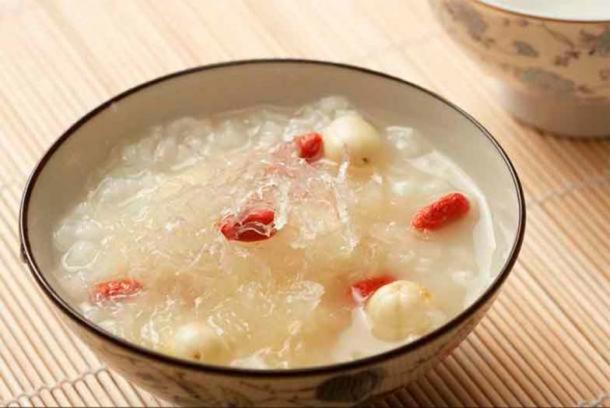
Edible Bird’s Nest soup, a Chinese delicacy and one of the top weirdest foods in history. As a food, it is extremely rich in proteins and nutritional value. (Kunmanoo /CC BY-SA 4.0)
5.Rhino Horn: A Mythical Aphrodisiac with Devastating Consequences
Unfortunately, our next entry is as controversial as tiger penis. Rhino horn has a long and tragic history as a supposed aphrodisiac and can also be traced back to ancient Chinese medicine and folklore, where it was considered a potent remedy for enhancing sexual prowess.
The symbolism is pretty clear here. Rhinoceroses are strong and imposing creatures that have a rather phallic-looking horn sticking out of their heads. Of course, people started to believe that consuming their horns could transfer these qualities to humans, particularly in the realm of sexuality.
This belief persisted over centuries and even spread to other parts of the world, contributing to the illegal poaching crisis that threatens rhinoceros populations today. The demand for rhino horn, driven by its perceived aphrodisiac properties, has led to widespread slaughter and pushed these magnificent animals to the brink of extinction.
As if we needed to say it, there is absolutely no scientific evidence to support its effectiveness as an aphrodisiac. In fact, it’s almost painfully easy to debunk. Rhino horn is mostly made up of keratin, which might sound familiar because it's what makes up our hair and nails.
This means eating rhino horn as an aphrodisiac is just about as effective as biting your nails or chewing on your hair. The tragic story of rhino horn serves as a somber reminder of the devastating consequences that can result from unfounded beliefs in the pursuit of passion and desire and the urgent need for conservation efforts to protect these iconic creatures.
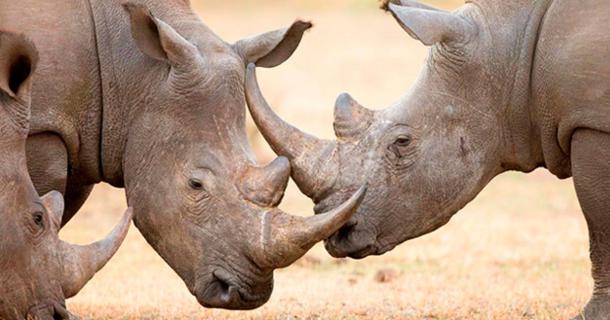
White rhinoceros locking their horns. (Mari / AdobeStock)
6.Crocodile Dung: An Ancient but Unsubstantiated Aphrodisiac
Okay, now we’re getting to the good stuff. Few aphrodisiacs are as peculiar, or as unappealing, as crocodile dung. But, like hippo sweat, this strange belief has its origins in the ancient cultures of Egypt, where crocodiles were both revered and feared for their formidable presence along the Nile River.

Crocodile dung was not only consumed to acquire virility but also used as an ingredient in ancient contraception. (Lip Kee from Singapore, Republic of Singapore/CC BY-SA 2.0)
Consuming crocodile dung as an aphrodisiac is rooted in the ancient Egyptian belief in sympathetic magic, where like attracts like. Crocodiles were seen as big, virile powerful creatures, and so it made a kind of sense that by consuming their dung, individuals could harness some of this virility and enhance their own sexual prowess. You are what you eat after all.
Unfortunately, in this case, being what you eat means being full of crocodile dung. And being full of that means having a stomach full of harmful bacteria, which can lead to serious health risks. Safe to say, there is no scientific basis for the use of crocodile dung as an aphrodisiac, and having crocodile dung on your breath and a bad case of food poisoning is unlikely to improve your sex life.
Thankfully, this practice has fallen out of favor over time as our understanding of hygiene and medicine evolved. Today, it serves as a curious historical artifact, a reminder of the lengths to which human imagination and superstition can stretch in the quest for passion.
7.Maca Root: An Ancient Peruvian Aphrodisiac with Modern Appeal
It’s probably about time we served up something a little less disgusting. How about Maca Root, an aphrodisiac with a history rooted in ancient Peruvian culture? Indigenous to the Andes Mountains, this cruciferous plant has been cultivated and consumed for thousands of years for its potential to enhance libido and sexual stamina.
Dating back to Incan civilization, Maca was prized for its supposed aphrodisiac properties. People believed that eating Maca increased fertility, boosted energy, and improved sexual performance. It was such a valuable commodity that it was sometimes even used as a currency among the Inca.
Even some modern scientists agree. Studies have shown that Maca may have the potential to improve sexual function and boost libido, possibly due to its adaptogenic properties that help the body adapt to stress. The research is still in its early stages, but Maca root has already gained popularity as a natural alternative to traditional, more disturbing aphrodisiacs.
8.Oysters: A Timeless Aphrodisiac from the Sea
We’ve all heard of this one. Oysters might seem like a relatively ordinary choice, but their reputation as a romantic delicacy has deep historical roots. The allure of oysters as aphrodisiacs dates back to ancient times, with various cultures associating them with fertility and desire.
The Romans considered oysters to be a symbol of love and they were often served at lavish feasts (or orgies!) to enhance romantic moods. The Greeks were also fans and associated them with Aphrodite, the goddess of love in Greek mythology. This belief in oysters' aphrodisiac properties persisted throughout the centuries and across cultures.
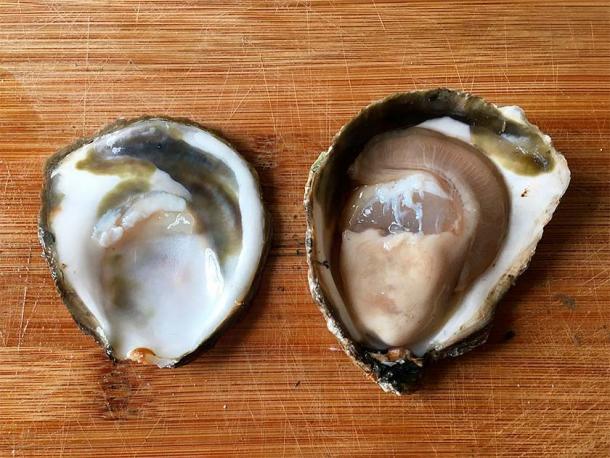
Oysters persist as a classic and captivating choice when it comes to aphrodisiacs. (Taishonambu/CC BY-SA 4.0)
But why oysters? They’re slimy and taste like the sea. Well, the association between oysters and romance is partly due to their sensual texture and shape, which some people found reminiscent of certain female body parts. Additionally, oysters are rich in zinc, a mineral essential for the production of testosterone, which plays a role in libido.
This doesn’t mean they’re a bonafide aphrodisiac, the scientific evidence supporting oysters as aphrodisiacs is limited. Still, they remain a popular choice for romantic dinners. Whether for their potential physiological effects or their rich symbolism, oysters continue to be a timeless and intriguing aphrodisiac option.
9.Chocolate: A Tempting Aphrodisiac with a Sweet History
How about an aphrodisiac we can all get behind? While not as exotic or unusual as some aphrodisiacs on this list, chocolate has a rich history of being associated with love and desire. Its aphrodisiac reputation can be traced back to ancient Mesoamerican civilizations, where the cacao bean was revered for its intoxicating properties.
The Aztecs believed that cacao was a gift from the god Quetzalcoatl, who was associated with wisdom and fertility. They used chocolate as an aphrodisiac by preparing a bitter drink known as "xocolātl," which was often flavored with vanilla and chili and drunk during marriage ceremonies and other romantic rituals.
After the fall of the Aztec Empire, chocolate became increasingly popular in Europe where it continued to be linked to romance and luxury. European aristocracy embraced chocolate as a symbol of opulence and passion. Casanova, the famous lover of the 18th century, was said to have favored chocolate for its sensual qualities.
And there’s good news for the chocolate lovers out there. Scientific studies have shown that chocolate contains phenylethylamine, a compound that can stimulate feelings of love and pleasure. While the actual impact of chocolate on desire varies from person to person, its association with romance remains strong.
10.Ginseng: A Herbal Aphrodisiac with Deep Roots
Let’s finish up with something healthy, herbal, and uncontroversial. Ginseng, a prominent herb in traditional Chinese medicine, boasts a history spanning thousands of years as an aphrodisiac. Revered for its potential to enhance energy, vitality, and sexual performance, ginseng's aphrodisiac reputation is steeped in ancient Chinese folklore and herbal medicine.
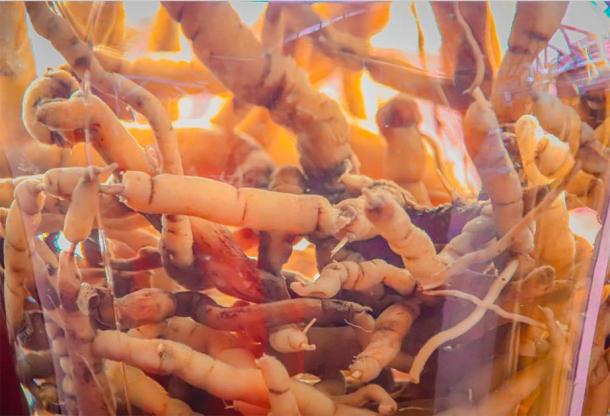
Close up of traditional ginseng root wine used in homeopathy and traditional Chinese Medicine and consumed worldwide for its libido booting qualities. (MarieXMartin/Adobe Stock)
Chinese medicine classifies ginseng as an adaptogen, much like maca root, which means it is believed to help the body adapt to stress and promote overall well-being. This adaptogenic quality led to ginseng's association with increased stamina and, by extension, improved sexual function. Simply put, stress is a mood killer and Ginseng is a stress killer.
The historical use of ginseng as an aphrodisiac can be traced back to ancient Chinese texts, where it was described as a tonic for boosting virility and enhancing desire. The belief in ginseng's aphrodisiac properties gained prominence during the Ming dynasty when it was embraced by emperors and nobility.
There’s even scientific research that suggests ginseng may have potential benefits for sexual health. Some studies have indicated that ginsenosides, the active compounds in ginseng, could improve erectile function and libido.
- The Rise and fall of Man: The Long History of Impotence Causes and Cures
- Traditional Himalayan ‘Viagra‘ fuels caterpillar fungus gold rush
After taking a quick look at the history of aphrodisiacs, one thing quickly becomes clear; people will go to any length to enhance sexual performance. From the dangerous allure of rhino horn to the historical symbolism of oysters, each of these aphrodisiacs tells a unique tale of human fascination with love and intimacy.
But while it’s easy to make light of the sheer weirdness of some of these aphrodisiacs, we have to remember many of them come at a real cost. For some, the cost is putting one’s health at risk. Whoever thought eating crocodile dung was a good idea? But for others, the cost is much higher, and it’s not the ones taking the aphrodisiac who are paying. While some of these beliefs have deep historical roots, it's crucial to approach them with a critical eye and prioritize ethical and scientific considerations.
Top image: Today, oysters are consumed as an aphrodisiac. Source: Ricky / Adobe Stock.
References
Doron. T. 2020. The strange science behind why (some) aphrodisiacs work. Available at: https://www.getroman.com/health-guide/the-strange-science-behind-why-some-aphrodisiacs-work/.
Malmed. A. 2017 . Love Potions: A Brief History of Aphrodisiacs. Available at: https://www.vogue.com/article/what-foods-are-aphrodisiacs-history
Moore. A. 2021. A long history of aphrodisiacs, from health tonic to sexual aid. Available at: https://psyche.co/ideas/a-long-history-of-aphrodisiacs-from-health-tonic-to-sexual-aid
Sandroni. P. 2001. Aphrodisiacs past and present: a historical review. Clin Auton Res. Available at: https://pubmed.ncbi.nlm.nih.gov/11758796/
















